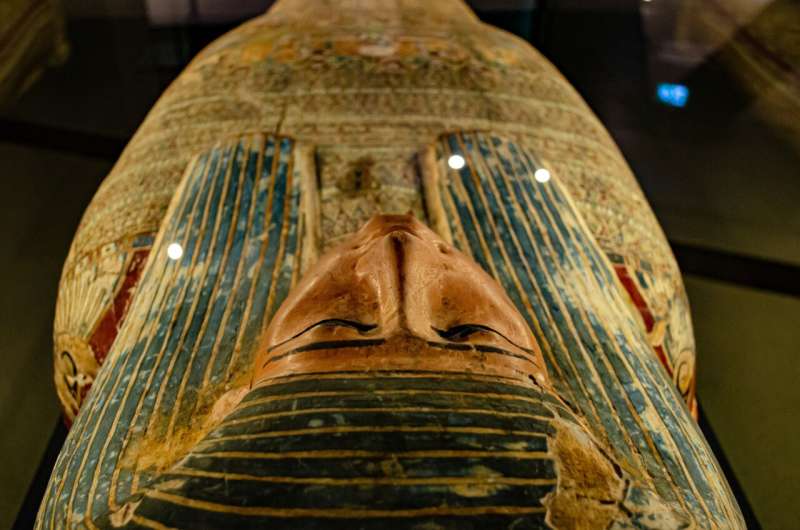Researchers from the Francis Crick Institute and Liverpool John Moores University have made a groundbreaking discovery by extracting and sequencing the oldest known Egyptian DNA, dating back 4,500 to 4,800 years. This genetic material, obtained from an individual buried in Nuwayrat, provides new insights into the ancestral roots of ancient Egyptians, linking them to North Africa and the Fertile Crescent. The findings were published in the prestigious journal Nature.
This achievement marks a significant milestone in the study of ancient DNA, coming four decades after Nobel laureate Svante Pääbo’s initial attempts to extract genetic material from Egyptian mummies. The technological advancements since then have enabled researchers to successfully sequence the first complete genome from ancient Egypt, shedding light on the genetic connections between ancient Egyptians and their neighbors in West Asia.
Unveiling the Past: Genetic Connections to the Fertile Crescent
During the period in question, archaeological evidence has long suggested that trade and cultural exchanges occurred between ancient Egypt and the Fertile Crescent—a region that includes modern-day Iraq, Iran, and Jordan. While artifacts such as pottery and writing systems hinted at these connections, genetic evidence was previously scarce due to the challenges of DNA preservation in warm climates.
The research team, led by Adeline Morez Jacobs, extracted DNA from a tooth of the individual, whose remains were initially excavated under British rule and housed at the Liverpool Institute of Archaeology. This individual lived during the transitional phase between the Early Dynastic and Old Kingdom periods and was buried in a ceramic pot within a hillside tomb. The absence of artificial mummification, which became standard practice later, likely contributed to the preservation of his DNA.
“By analyzing his genetic code, the researchers showed that most of his ancestry mapped to ancient individuals who lived in North Africa. The remaining 20% of his ancestry could be traced to ancient individuals who lived in the Fertile Crescent.”
Piecing Together a Historical Puzzle
The study not only provides genetic evidence of population movements into Egypt but also offers insights into the lifestyle of the individual. Chemical signals in his teeth revealed that he likely grew up in Egypt, and skeletal analysis suggested he might have worked as a potter or in a similar trade, given the muscle markings indicative of prolonged sitting with outstretched limbs.
Adeline Morez Jacobs commented, “Piecing together all the clues from this individual’s DNA, bones, and teeth has allowed us to build a comprehensive picture. We hope that future DNA samples from ancient Egypt can expand on when precisely this movement from West Asia started.”
Implications for Future Research
The implications of this study are profound, as it opens the door for further exploration of migration patterns and ancestry in ancient Egypt. Linus Girdland Flink, a co-senior author, emphasized the significance of this discovery, stating, “This individual has been on an extraordinary journey. He lived and died during a critical period of change in ancient Egypt, and his skeleton was excavated in 1902 and donated to World Museum Liverpool, where it then survived bombings during the Blitz that destroyed most of the human remains in their collection.”
Pontus Skoglund, another co-senior author, highlighted the challenges overcome by the research team, “Forty years have passed since the early pioneering attempts to retrieve DNA from mummies without successful sequencing of an ancient Egyptian genome. Building on this past research, new and powerful genetic techniques have allowed us to cross these technical boundaries and rule out contaminating DNA.”
Looking Ahead: Expanding the Genetic Landscape
Joel Irish, a professor at Liverpool John Moores University, noted the potential for future studies to further unravel the complexities of ancient Egyptian ancestry. He explained that the skeletal markings provide clues to the individual’s life, suggesting a possible role in pottery, a trade introduced to Egypt around the same time.
Despite the challenges, the researchers remain optimistic about the potential for future discoveries. They aim to collaborate with Egyptian researchers to build a more comprehensive picture of migration and ancestry in ancient Egypt, hoping to uncover more about the movements of people and cultural exchanges during this fascinating period.
As the field of ancient DNA research continues to evolve, this study represents a significant step forward in our understanding of early Egyptian history and its connections to the broader ancient world.
